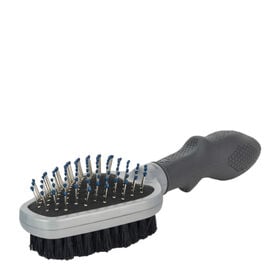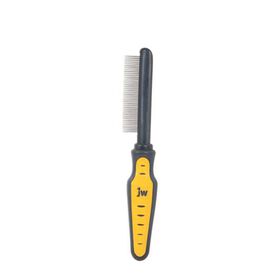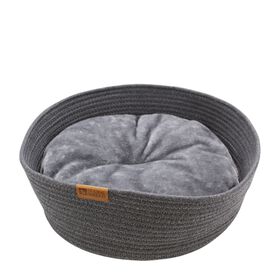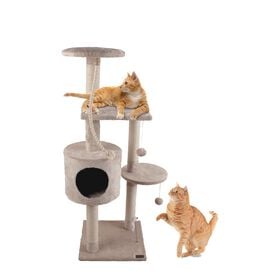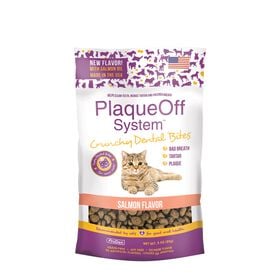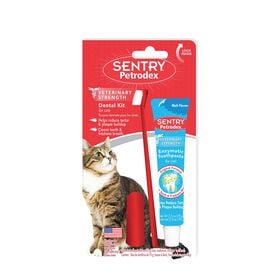Himalayans can be referred to as colourpoint Persians, Himalayan Persians or colourpoint longhairs, depending on where you are in the world. Many cat associations agree that Himalayans, created by humans, are not a breed, but a type of Persian. Only their colour really sets them apart from their long-haired, short-nosed counterparts. Despite this, Himalayans are among the most popular cats in the world.
Morphology and appearance
Like the Persian, the Himalayan is referred to as cobby: it is a medium- to large-size cat, with a stocky, heavily boned body. It has a broad, round head and small, rounded, well-spaced ears. It has a strong chin and a short, turned-up nose, with a pronounced stop between the eyes. Its profile can therefore be very round or nearly vertical, depending on the lineage. Its large, round eyes are always bright blue. It has a short, thick tail that is consistent with the rest of its body. Its long, dense, shiny coat boasts a generous undercoat.
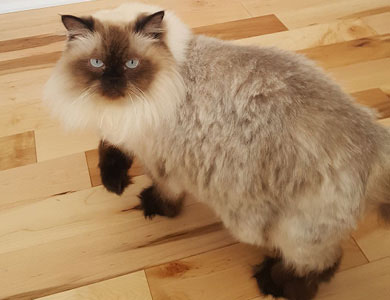
The Himalayan’s coat colour or point colouration is what really distinguishes it from the Persian. It is caused by a variant in the gene for albinism found in the Siamese, one of the breeds used to develop the Himalayan. All colourpoint kittens are born white. After a few days, the coldest parts of the body, namely the ears, face mask, tips of the paws and tail, gradually become coloured. The rest of the body remains white or cream, but can darken over time, especially if the colour of the extremities is dark. All base colours, point colours and patterns are possible.
Le reste du corps restera blanc ou crème, mais pourra devenir plus foncé avec le temps, surtout si la couleur des extrémités est sombre. Toutes les couleurs de base et leurs dilutions, mais aussi tous les motifs, sont possibles.
Main coat colours:
Base colours:
- Seal point: very dark brown, almost black
- Chocolate point: chocolate brown to milk chocolate
- Red or flame point : dark orangy rust and hot
Point colours:
- Blue point: blue/grey slate
- Lilac point: pinkish grey to faded lilac
- Cream point: light rust to cream, rather cold
The points can also be tabby (lynx point), tortoiseshell-patterned (tortie point), tipped (chinchilla or shaded point), etc.
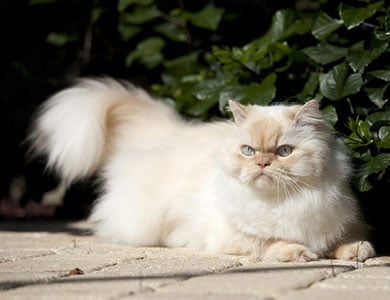
Behaviour
The temperament of Himalayans strongly resembles that of Persians, although Himalayans are slightly more active. They like to play, but don’t expect to see them climbing the curtains or onto the refrigerator. Generally placid, they prefer calmness over chaos. Some Himalayans can even become anxious in an environment where there is a lot of action. A very busy family with young children or unruly dogs may not be suitable. They like being near humans and some are insatiable when it comes to petting, but they also enjoy their moments of solitude. They seek out comfort and can so readily take over the best armchair in the house that you would think they were aware of their elegant appearance. Generally, they are not very vocal cats and their voice does not resemble that of the Siamese. Instead, they often communicate with their big, blue, expressive eyes.
That said, there is a wide range of behaviours among the different individuals of a given breed. It is therefore advisable to gather information from a breeder or shelter before choosing your cat, to make sure its personality is a good fit for your family.
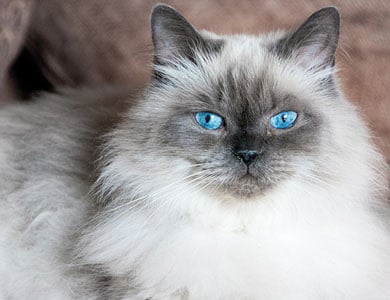
Level of maintenance (grooming)
Himalayans have particularly demanding grooming needs: they must be brushed or combed daily to get rid of dead fur and remove tangles. Undercoat hair can become knotted and felted together quite quickly, and owners have to be vigilant to prevent this from happening, since it can be quite uncomfortable for cats. Getting cats used to being brushed and combed from early on will help make grooming easier.
Himalayans tend to have runny eyes, which stains the hair between their eyes and nose. It is important to keep the corners of the eyes and the folds of the nose clean and dry, and make sure the skin stays healthy. Like all domestic cats, Himalayans require regular claw maintenance. Their teeth also need to be brushed daily to prevent periodontal disease. Find out about appropriate methods and products for your cat.
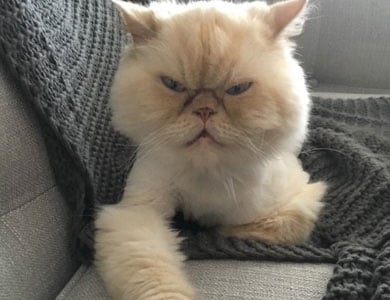
Origins
Although its name is reminiscent of Asia and its mountain chain, the Himalayan does not come from that region of the world. Its breed originated from a breeding program that began in the U.S. in the early 1930s. Breeders crossed a Siamese with a Persian in an effort to obtain a Persian-type cat with Siamese colouration. Dr. Clyde Keller from Harvard Medical School and breeder Virginia Cobb (Newton cattery) worked together for five years with the aim of producing the first colourpoint longhair. The first Himalayan kitten was named Newton’s Debutante, and an article was published in the American Journal of Heredity.
It was not until the 1950s that there was renewed interest in the colourpoint longhair. In England, Brian Stirling-Webb (Briarry cattery) and S.M. Harding (Mingchiu cattery) joined efforts to develop the colourpoint longhair variety from a stray named Bubastis Georgina. Not long after, in Canada, Ben Borrett (Chestermere cattery) developed a colourpoint longhair breeding program. He imported several cats from the Briarry cattery. At the same time, in the U.S., Marguerita Goforth (Goforth cattery) met a longhaired cat with seal point colouring named Princess Himalayan Hope. The cat’s striking looks convinced Goforth to begin breeding Persian-type cats with the Siamese colouring.
In 1955, the Governing Council of the Cat Fancy (GCCF) recognized the colourpoint Persian. The U.K. therefore considered it as part of the Persian breed. In 1957, the American associations, in turn, recognized it, but as a new breed: the Himalayan. Still today, in Europe, several cat associations do not recognize the Himalayan as a breed, but rather as a colour class of Persians. To date, The International Cat Association (TICA), the American Cat Fanciers Association (ACFA), the Fédération Internationale Féline (FIFe) and the Canadian Cat Association (CCA) all recognize the Himalayan as a distinct breed.
Unusual facts
Although the Himalayan’s colour was derived from crossing the Siamese with the Persian, Siamese are no longer used to breed Himalayans.


